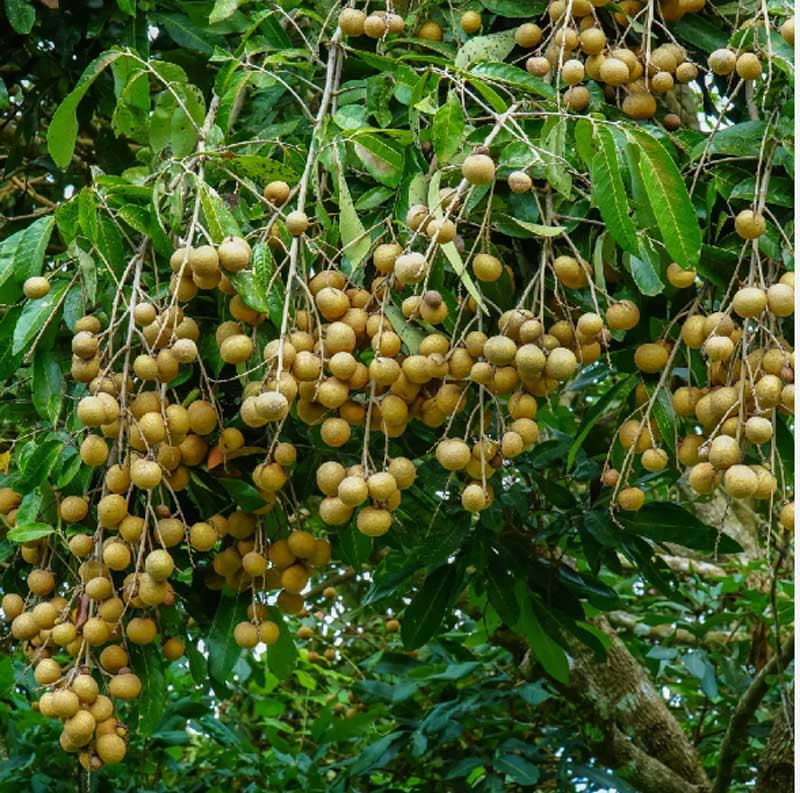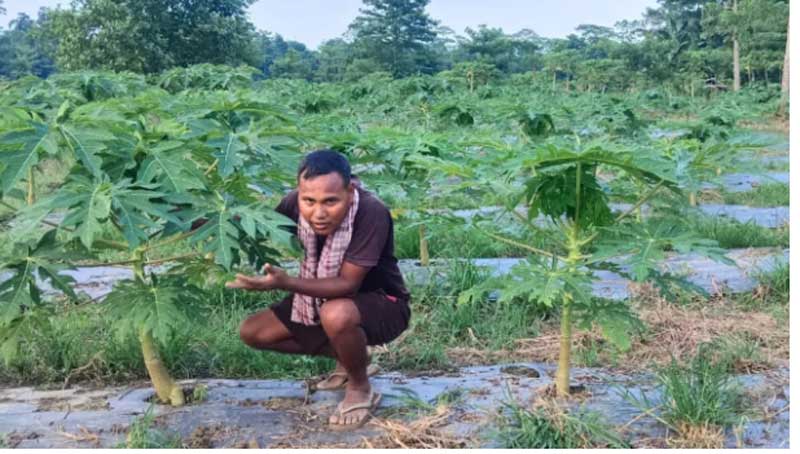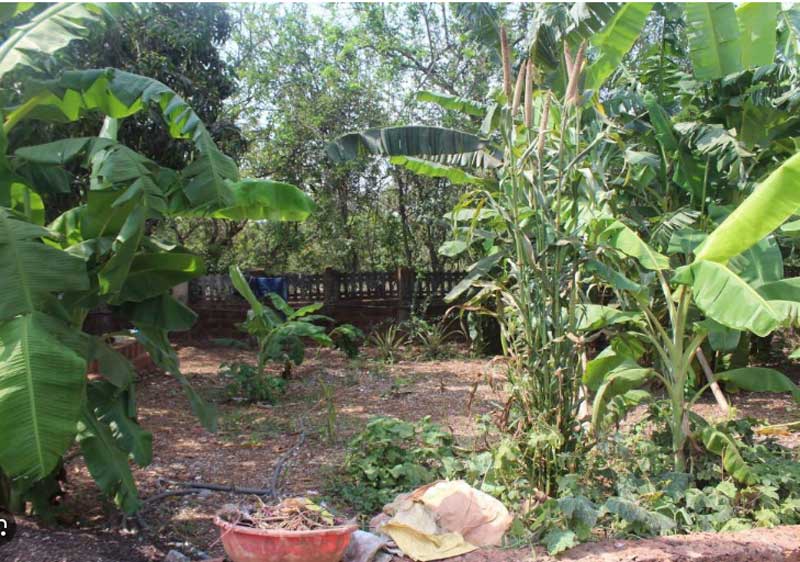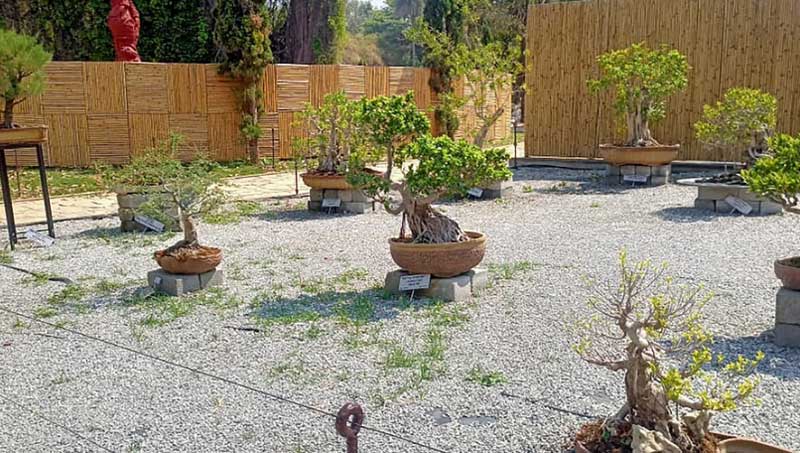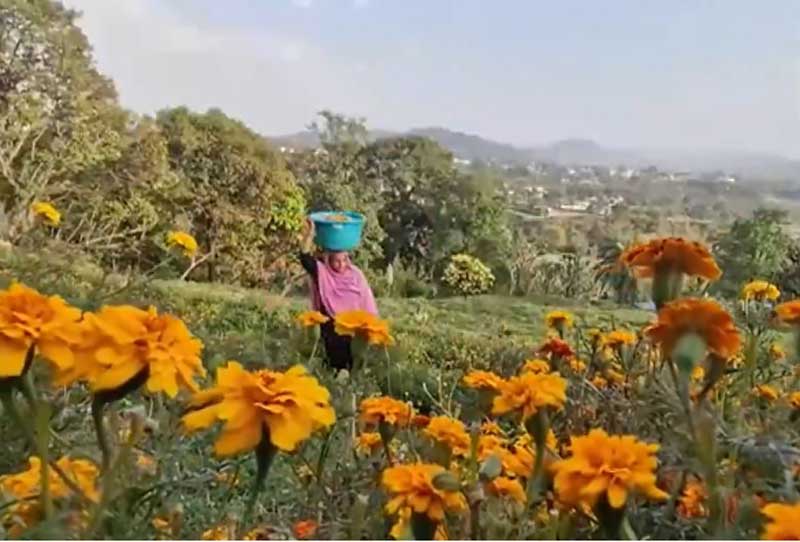Scientists Uncover Rare Underground Palm that Flowers and Fruits Below Surface
Researchers at the Royal Botanic Gardens (RGB), Kew, in collaboration with their partners, have made a remarkable discovery: a palm species that flowers and bears fruit almost entirely underground. This groundbreaking finding, published in the journal PALMS, unveils a new-to-science species named Pinanga subterranea, derived from the Latin word for ‘underground.’
Native to the lush tropical island of Borneo in Southeast Asia, the plant and its fruit have long been known to locals, who even enjoy consuming the sweet and juicy bright-red fruit. Surprisingly, P. subterranea remained unnoticed by scientists for years, despite the study of over 300 different palm species on the island. The locals refer to the plant using various names, such as Pinang Tanah, Pinang Pipit, Muring Pelandok, and Tudong Pelandok, in at least three Bornean languages.
The international team of researchers uncovered that P. subterranea thrives in the primary rainforests of western Borneo and can be found scattered across the borders between Malaysia’s Sarawak and Indonesia’s Kalimantan. The scientific community overlooked this plant for an extended period until their Malaysian colleague, Dr. Paul Chai, brought it to their attention.
Dr. Benedikt Kuhnhäuser, a future leader fellow at RGB, Kew, and part of the research team, expressed their gratitude by stating that without the tip-off from Dr. Paul Chai, they would have probably mistaken this exciting new species for an unremarkable palm seedling and would have walked right past it. Dr. Kuhnhäuser further described the discovery as a once-in-a-lifetime find, as P. subterranea represents a rare case of underground flowering, which is the first known occurrence in the entire palm family.
Most flowering plants have evolved to develop their flowers and fruits above ground, facilitating pollination and seed dispersal. However, a small subset of plants has adapted to conduct this process underground. P. subterranea now joins the ranks of over 2,500 known palm species and at least 171 species across 89 genera and 33 plant families that utilize underground flowering (geoflory) and fruiting (geocarpy).
The unique characteristic of P. subterranea perplexes researchers due to its dual instance of geocarpy and geoflory. Typically, the Pinanga genus relies on insect pollination, making underground pollination and movement more challenging compared to above-ground conditions. The research team discovered a substantial number of seeds and fruit set by the plant, indicating a successful pollination mechanism that remains a mystery to scientists.
Dr. William Baker, the senior research leader at the Tree of Life project at RBG Kew, conveyed his astonishment at the discovery, stating that he had been studying palms for 30 years and was amazed by how they consistently managed to surprise researchers. The revelation gives rise to various inquiries, including the pollinator’s identity, the method by which the pollinator discovers the subterranean flowers, and the evolutionary beginnings of this phenomenon. Dr. Baker expressed his eager anticipation for forthcoming revelations regarding the remarkable realm of palms.
Indonesian researcher Agusti Randi, from the National University of Singapore and lead author of the study, mentioned that it was interesting to note that this was not the first instance of encountering the palm species. In 2017, Randi had come across a few specimens in a forest in West Kalimantan. Some of these specimens had been unearthed by wild pigs, while others were likely consumed or crushed by the animals.
Agusti Randi recalled the experience, explaining that during the initial encounter, he found several ripe fruits with a vibrant red color lying on the ground in the vicinity of a population of P. subterranea while a group of wild boars were digging in the soil. He also observed that the wild boars had exposed the plant’s stems to reach the underground fruit, and their feces contained the seeds of the palm.

